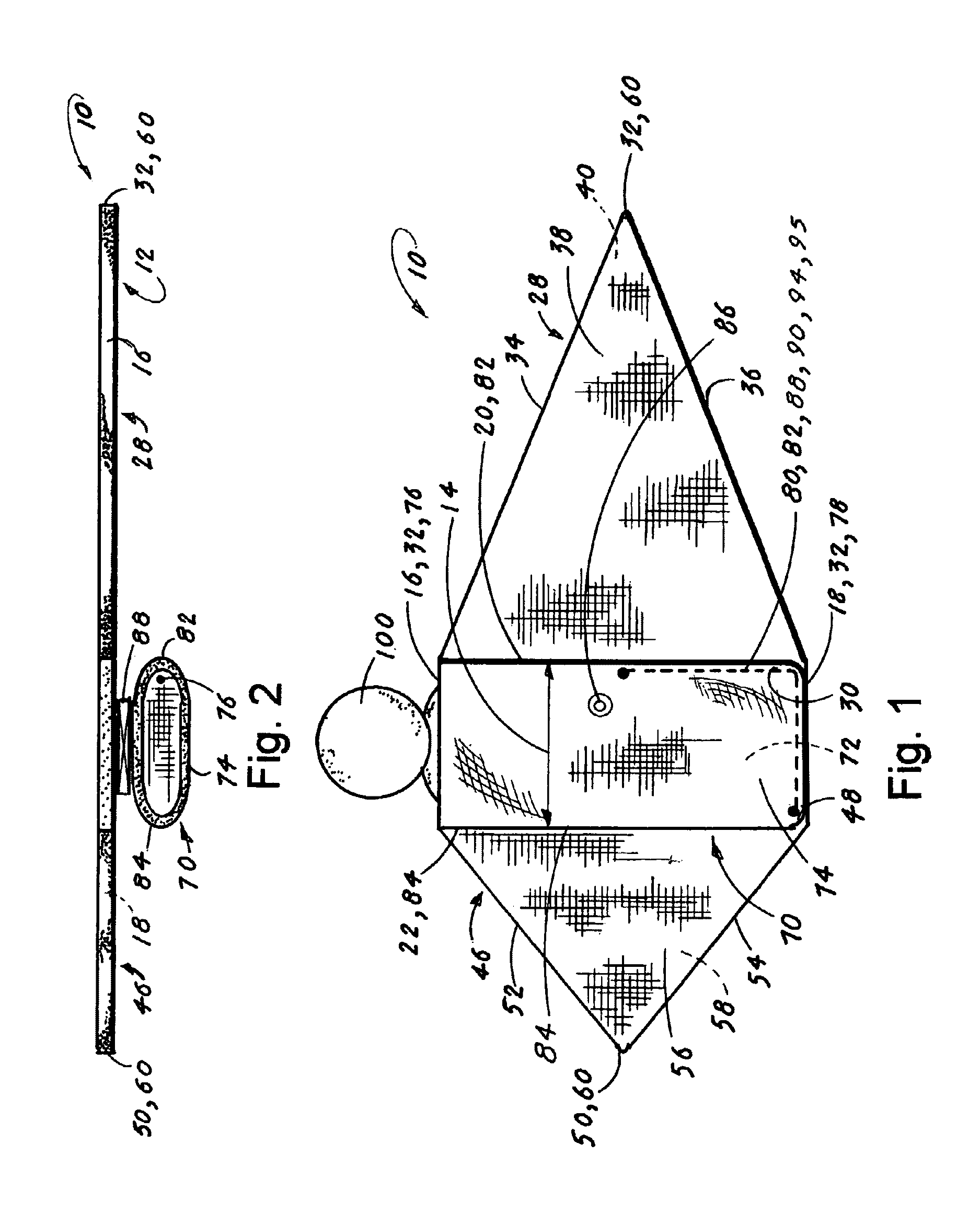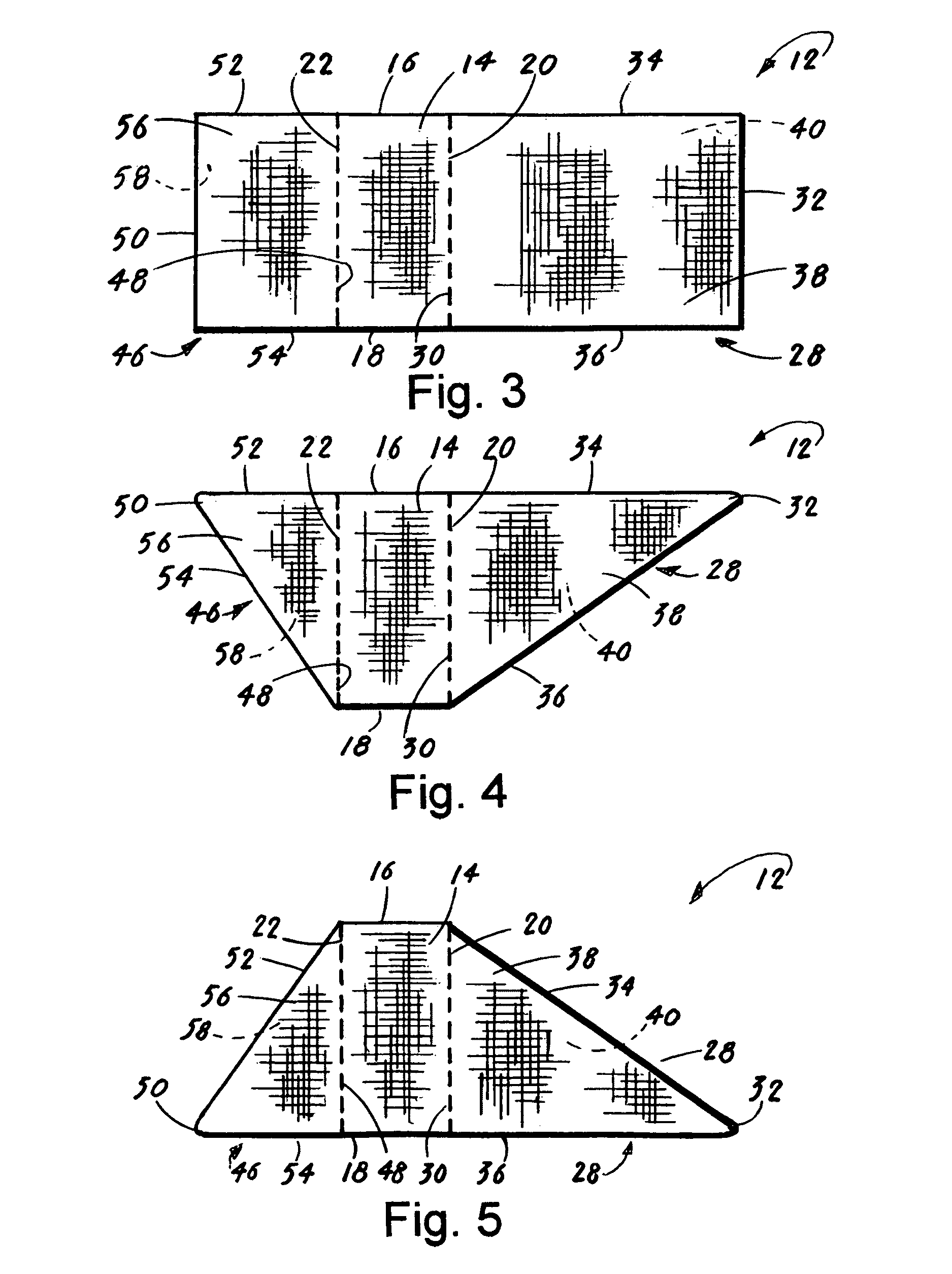Infant swaddling
a technology for infants and swaddling, applied in the field of infant swaddling, can solve the problems of poor stretchability, poor comfort for infants, and loss of wicking ability of topologically treated materials, and achieve the effects of promoting moisture wicking, reducing the risk of sids, and rapid moisture wicking capabilities
- Summary
- Abstract
- Description
- Claims
- Application Information
AI Technical Summary
Benefits of technology
Problems solved by technology
Method used
Image
Examples
Embodiment Construction
[0056]The following detailed description discloses swaddling and corresponding methods of use. It should be appreciated that the embodiments discussed below represent examples of suitable configurations, and the components can be resized and / or reconfigured as desired to produce a desired embodiment or effect. For example, the figures may show certain features on a left side or a right side of the swaddling. These features can be reversed so that features are placed on the opposite side of the swaddling. Such modifications are within the scope of the invention.
Swaddling
[0057]The swaddling 10 comprises a pouch 70. “Pouch” is a broad term and includes, without limitation, structures that, in use on an infant, generally resemble bags, pockets, sacks, tubes, or cylinders. The term “pouch” further contemplates that such structures can be closed, open, or reclosable at the lower end. “Recloseable” means that the structure can be quickly and reversibly closed and opened during normal use w...
PUM
 Login to View More
Login to View More Abstract
Description
Claims
Application Information
 Login to View More
Login to View More - R&D
- Intellectual Property
- Life Sciences
- Materials
- Tech Scout
- Unparalleled Data Quality
- Higher Quality Content
- 60% Fewer Hallucinations
Browse by: Latest US Patents, China's latest patents, Technical Efficacy Thesaurus, Application Domain, Technology Topic, Popular Technical Reports.
© 2025 PatSnap. All rights reserved.Legal|Privacy policy|Modern Slavery Act Transparency Statement|Sitemap|About US| Contact US: help@patsnap.com



